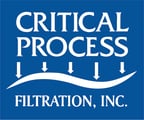A pharmaceutical manufacturer was evaluating their filtration processes used for bioburden reduction of various saline solutions. They aimed to improve throughput and reduce filtration cost.
The Filtration Challenge
• The solutions had high and varying levels of undissolved solids
• Final filter performance was unpredictable, with intermittent premature filter fouling even with a pleated polypropylene depth pre-filter installed upstream
• The filter could not affect the levels of active ingredients in the solution
Comparative Testing at CPF’s Applications Lab
After discussions with the customer’s process team, the CPF Applications team proposed testing the following options:
• Single-layer Polyethersulfone (PES) membrane
• Dual layer PES membrane
• PES membrane with an integrated pre-filter layer of High Capacity PES membrane
For this testing, the customer supplied a surrogate saline solution with undissolved inorganic particles and samples of the Dual Layer Blended Cellulose membrane filters that were being used.
Screening tests were performed using disc filters. The solution was first filtered using a polypropylene depth filter (CPF equivalent of the pre-filter used by the customer), then fed through the test disc at a constant flow rate. The volume filtered to reach a pre-determined terminal pressure drop was recorded. From this testing, the PES Membrane with High Capacity PES pre-filter was the best CPF option and outperformed the Blended Cellulose filters supplied by the customer.
Customer Confirmation Testing
The customer ordered a quantity of BPS filters (0.22 μm PES membrane filter with 0.5 μm High Capacity PES prefilter) to use in a full-scale filtration test to ensure the filter performed as required, both in meeting the filtration specification and resolving the fouling issues experienced with the Mixed Ester filters. Each filter was run with the pleated polypropylene depth pre-filter, and tested on four different saline solutions, each with unique ingredients and varying levels of undissolved particulates. In all cases, the CPF BPS filter outperformed the dual layer Blended Cellulose filter. The table below shows the resulting increase in throughput:
Test Results
In all cases, the Critical Process Filtration BPS filter with the high capacity PES membrane prefilter layer and PES membrane final filtration layer outperformed the dual layer cellulose acetate filter. The table below shows the increase in throughput using the Critical Process Filtration HPPS filter.
The filtrates from each full-scale filtration run were tested by the customer, showing all solutions met passed all established test criteria:
• Levels of organisms and particulate contaminants were well below the specified level
• Active ingredient concentrations and activity levels were unaffected by the change in the filter
Solution Implementation
The customer switched to using the specified BPS filters (0.22 μm PES membrane filter with 0.5 μm High Capacity PES pre-filter) for all of their saline solution filtrations. As a result of the improved throughput, the customer uses fewer filters and has reduced their saline solution filtration cost by approximately 15%. Critical Process Filtration performs process evaluations, troubleshooting analyses, filter process development tests, and application consulting every day. Contact us to discuss your filtration challenge.
